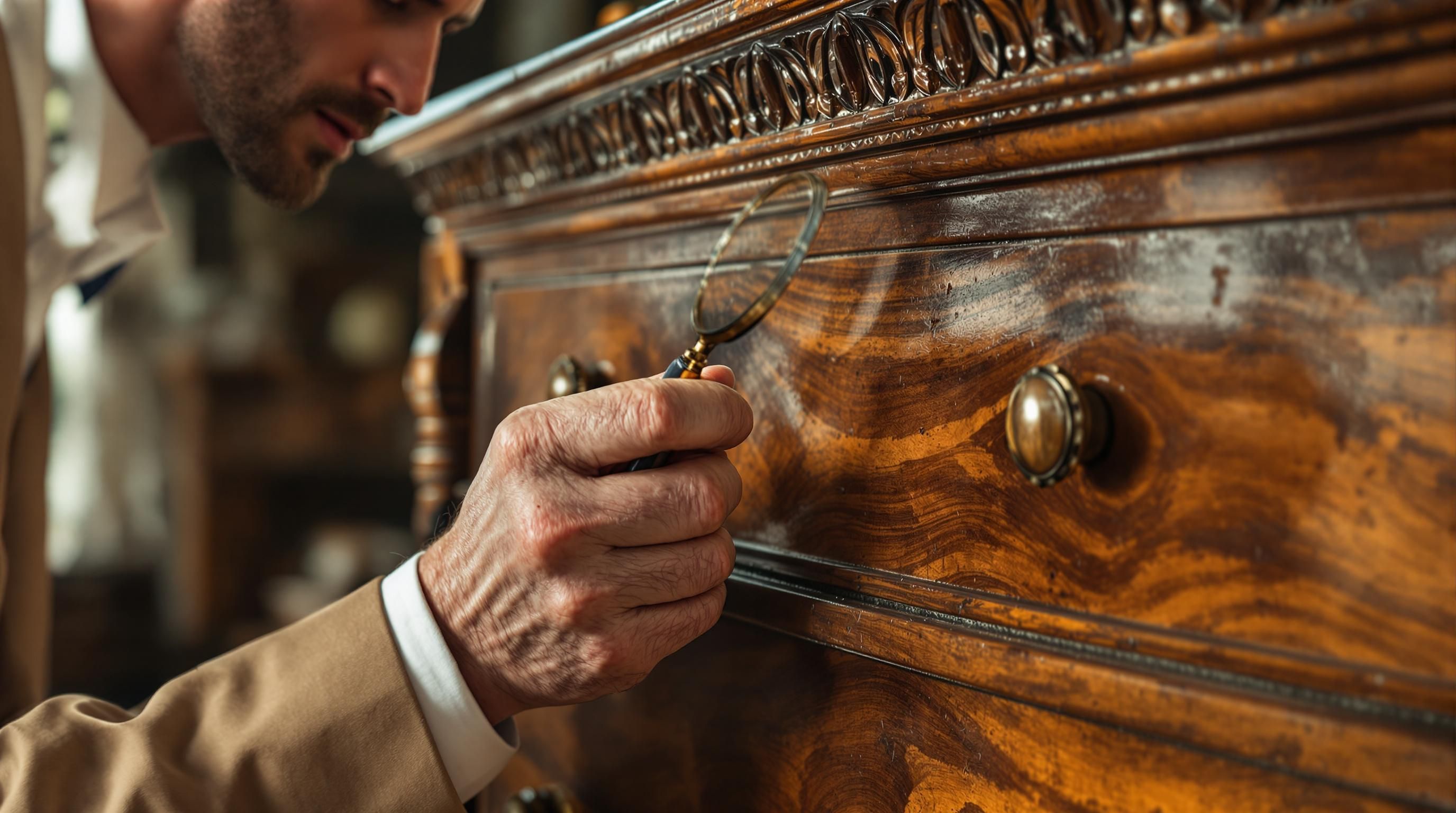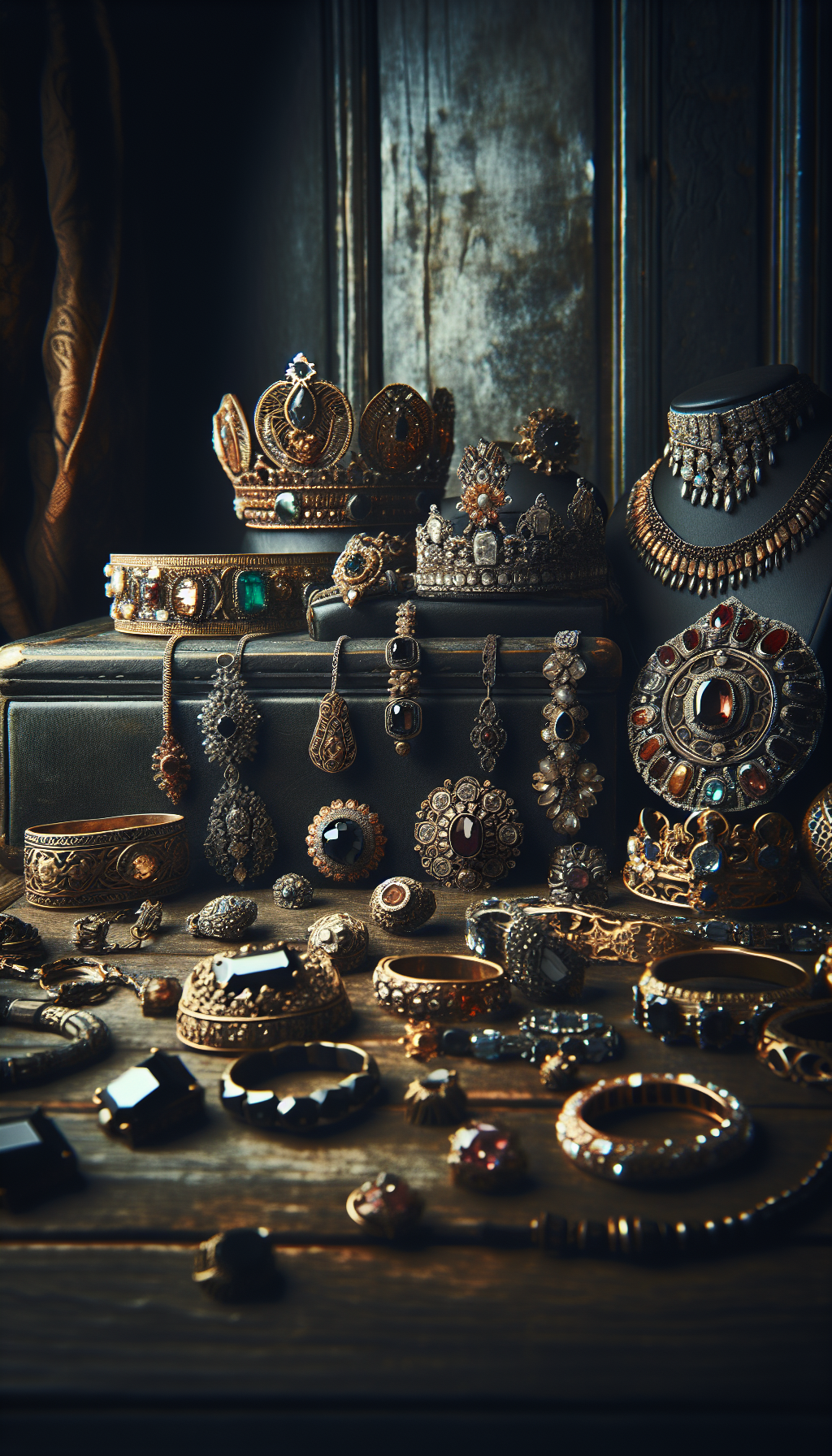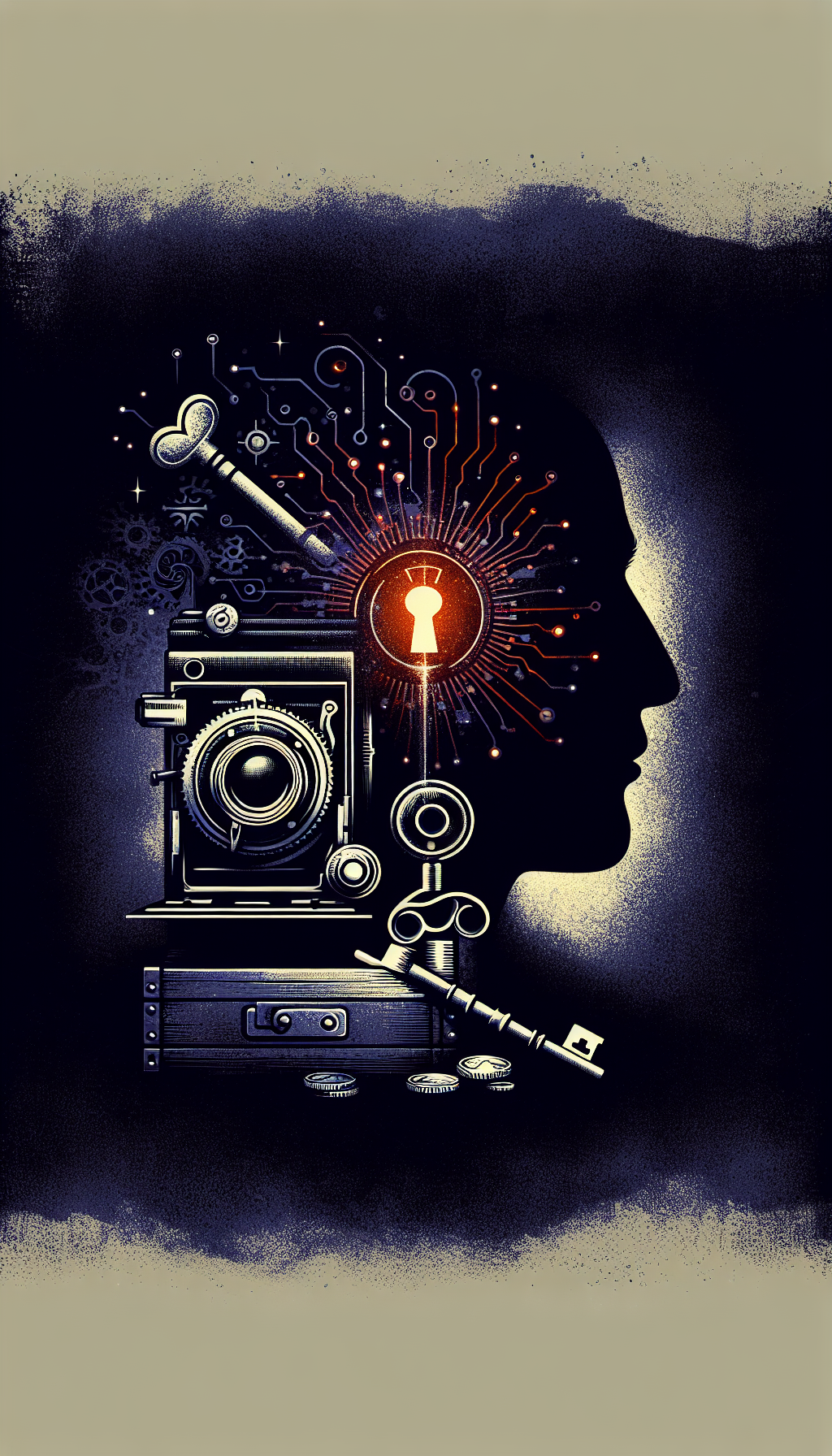Introduction to Antique Furniture Appraisal
Antique furniture appraisal is both an art and a science. While professional appraisers spend years developing their expertise, there are fundamental techniques anyone can learn to better understand a piece’s potential value. This guide will walk you through the essential steps of appraising antique furniture, from identifying key characteristics to researching comparable sales.
Antique Furniture Market Insights
- $50-$200: Average cost of a professional antique furniture appraisal
- 30-50%: Value difference between good and excellent condition
- 100+ years: Minimum age requirement for furniture to be considered truly “antique”
Why Appraise Antique Furniture?
Before diving into the appraisal process, it’s important to understand why proper valuation matters:
- Financial protection: For insurance purposes, knowing the value ensures adequate coverage
- Selling with confidence: Prevents undervaluing treasured pieces or overpricing items that won’t sell
- Estate planning: Helps with fair distribution of assets among heirs
- Tax implications: Necessary for charitable donations, estate taxes, and casualty losses
- Investment knowledge: Understanding value trends helps inform collecting strategies
Essential Steps in the Appraisal Process
Step 1: Identify the Style and Period
Determining when and where a piece was made is crucial to establishing its value. Different furniture styles were popular during different historical periods, each with distinctive characteristics:
Major Furniture Style Periods
- 1600-1730
William and Mary/Queen Anne
Characterized by curved lines, cabriole legs, and shell motifs. These early American styles show strong English influence. - 1750-1830
Georgian/Federal
Features neoclassical elements, straight lines, and delicate inlays. Often showcases contrasting wood veneers. - 1830-1900
Victorian
Ornate decoration, heavy proportions, and dark woods. Includes Rococo Revival, Gothic Revival, and Renaissance Revival substyles. - 1880-1920
Arts and Crafts/Mission
Simple lines, visible joinery, and natural finishes. Reaction against Victorian excess and machine production. - 1920-1950
Art Deco/Mid-Century
Geometric forms, exotic materials, and streamlined design. Modern aesthetic with emphasis on functionality.
Research furniture style guides or consult online resources like The Decorative Collective to help identify your piece’s period and style characteristics.
Step 2: Examine Construction Methods and Materials
The construction methods and materials used can reveal much about a piece’s age, authenticity, and quality:
Construction Assessment Checklist
Examine these elements to determine age and authenticity
- Joinery techniques (dovetails, mortise and tenon, etc.)
- Wood types used (primary and secondary woods)
- Signs of hand tools vs. machine manufacturing
- Hardware style and attachment methods
- Drawer construction and bottom panels
- Finish type and patina development
According to Fontaine’s Auction, examining construction details helps determine both authenticity and approximate age. For example, certain dovetail joint styles were only used during specific periods, while circular saw marks weren’t common until after 1830.
Step 3: Look for Maker’s Marks and Signatures
Identifying the maker or manufacturer can significantly impact value. Check for:
- Signatures or stamps on the underside of drawers
- Paper labels on the back or bottom of pieces
- Metal plates affixed to the furniture
- Branded or stamped marks on unexposed areas
- Distinctive construction elements associated with specific makers
Furniture by renowned makers like Duncan Phyfe, Gustav Stickley, or Thomas Chippendale commands premium prices compared to similar anonymous pieces from the same period.
Step 4: Assess Condition Thoroughly
Condition is one of the most critical factors in determining value. The AppraiseItNow Blog emphasizes that appraisers scrutinize patina, dimension, and comparable sales when evaluating antique furniture.
How Condition Affects Value
Impact of condition on antique furniture pricing
</tbody>
</table>
Watch for these condition issues that can significantly affect value:
- Structural damage or instability
- Replaced components or mismatched parts
- Poor or amateur repairs
- Evidence of insect damage (look for tiny holes)
- Water damage or staining
- Loss of original hardware
Step 5: Research Comparable Sales
Finding what similar pieces have sold for recently provides the most accurate picture of current market value. According to Value My Stuff, comparing your item to recent auction results is essential for accurate appraisal.
Research resources include:
- Auction house results (both online and in-person)
- Price guides and reference books
- Online marketplaces with completed sales
- Antique dealer pricing (accounting for retail markup)
- Appraisal databases and services
Professional vs. DIY Appraisal
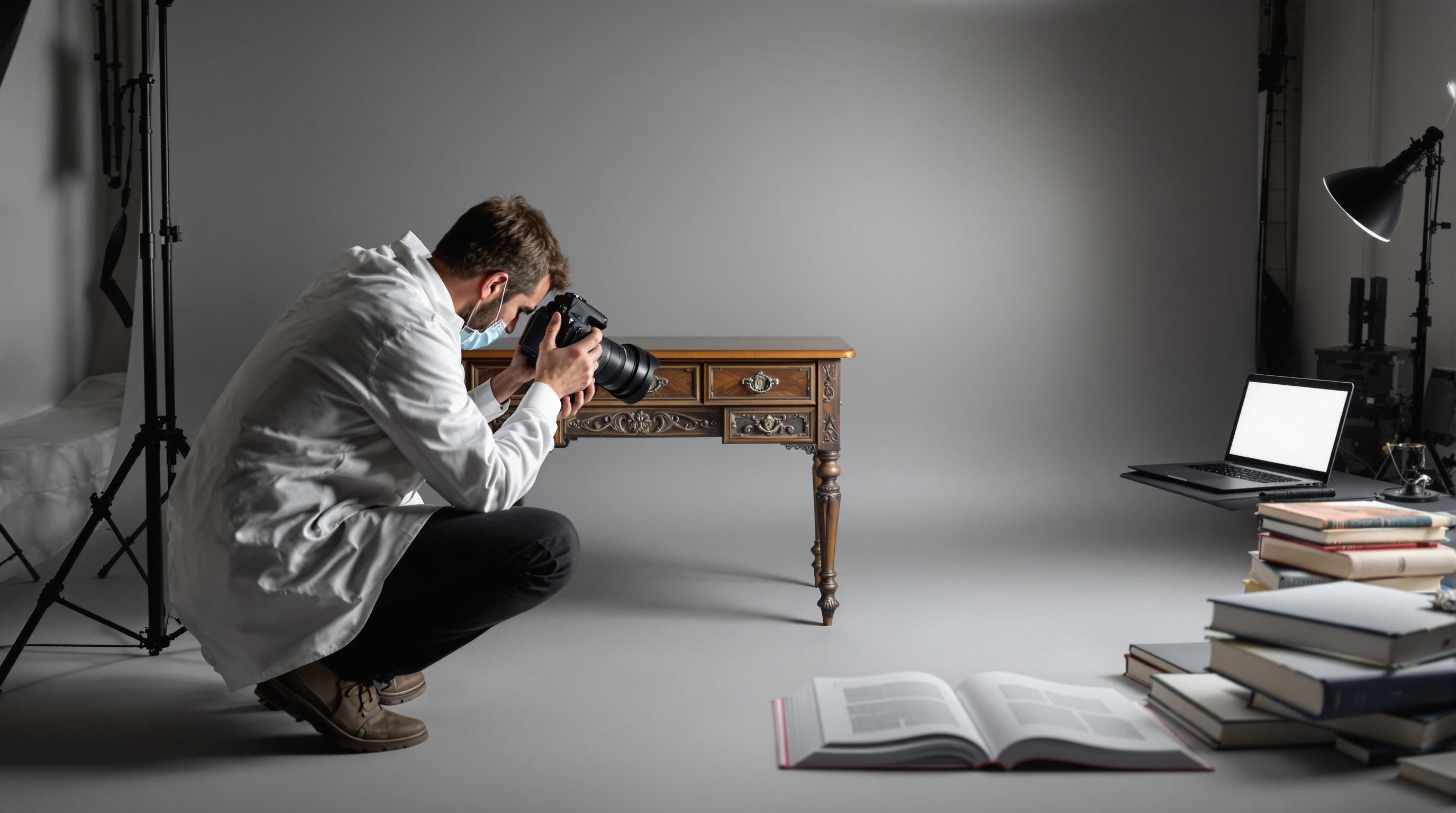
When to Hire a Professional Appraiser
Consider professional appraisal services in these situations:
- High-value items: For potentially valuable pieces worth over $1,000
- Insurance purposes: When documentation is needed for coverage
- Estate settlement: For fair division of assets or tax purposes
- Authenticity questions: When you suspect a rare or exceptional piece
- Donation valuation: For tax deduction documentation
- Legal requirements: For divorce settlements or probate
According to a Reddit thread on antique appraisals, services like DJR Authentication offer virtual appraisals starting at $25 for quick opinions.
Types of Professional Appraisals
Different appraisal types serve different purposes:
Appraisal Types
Common types of furniture appraisals and their purposes
| Category | Price | Notes |
|---|---|---|
| Mint/Museum Quality | 100% of value | Original finish, no damage or repairs, complete provenance |
| Excellent | 80-90% of value | Original finish, minor wear, no significant damage |
| Very Good | 60-80% of value | May have restored finish, minor repairs, good structural integrity |
| Good | 40-60% of value | Some repairs, refinishing, or replaced parts |
| Fair/Poor | 20-40% of value | Significant damage, extensive repairs, or major alterations |
</tbody>
</table>
As noted on JustAnswer’s furniture appraisal guide, fair market value (what you might see at auction) can be $1,000-1,500 for quality antiques, depending on the sales venue and local market.
Finding a Qualified Appraiser
When seeking professional help, look for appraisers with:
- Certification from recognized organizations (ISA, AAA, USPAP)
- Specialization in furniture or the specific period of your piece
- Good reputation and reviews
- Clear fee structure (hourly vs. per-item)
- Willingness to provide written appraisals with methodology explained
- No conflict of interest (should not offer to buy items they appraise)
Value Factors Beyond Age and Condition
Provenance and Historical Significance
Documented history and ownership can dramatically increase value:
- Furniture owned by famous individuals
- Pieces with documented historical significance
- Items with unbroken chain of ownership records
- Furniture featured in publications or exhibitions
- Pieces with original sales receipts or documentation
According to Prestige Estate Services, provenance can be a critical factor in determining an antique’s true market value.
Rarity and Desirability
Market demand often dictates value more than age or even condition:
- Unusual or limited production pieces command premiums
- Furniture from highly collectible periods or makers
- Regional pieces with distinctive characteristics
- Items that match current decorating trends
- Pieces that retain complete original components
Size and Practicality
Modern homes and lifestyles affect antique furniture marketability:
- Oversized pieces (large armoires, massive dining tables) typically sell for less
- Items that serve modern functions maintain better value
- Pieces that can be repurposed attract broader interest
- Furniture that fits through standard doorways is more marketable
- Items that require specialized environments (humidity control, etc.) may have limited appeal
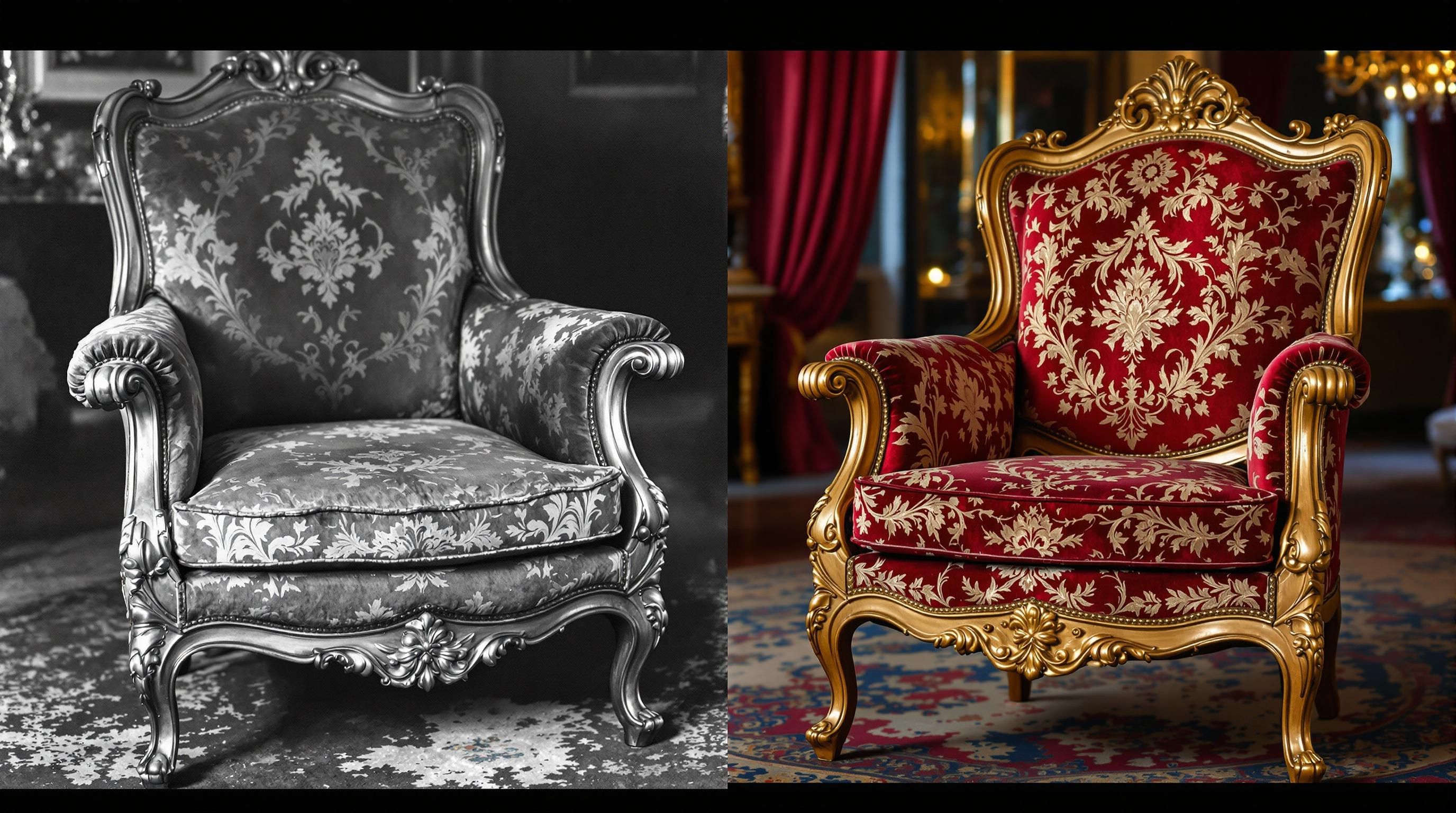
Digital Options for Antique Furniture Appraisal
Online Appraisal Services
Several reputable services offer virtual appraisals:
- Value My Stuff provides expert appraisals within 24-48 hours based on photographs
- Online auction houses often offer preliminary valuation services
- Some professional appraisers conduct video consultations
- Specialty forums where experts might offer informal opinions
According to Value My Stuff, their process requires only photos, measurements, and a brief description submitted through their online form to receive an expert appraisal.
Mobile Apps and AI Tools
While not replacements for professional opinions, these tools can provide preliminary estimates:
- Image recognition apps that suggest potential identification
- Price comparison tools that aggregate online sales data
- Collection management apps with built-in valuation features
- AR tools that help visualize furniture in different settings
Best Practices for Digital Appraisals
To get the most accurate remote appraisal:
- Take clear, well-lit photos from multiple angles
- Include close-ups of details, marks, and damaged areas
- Provide accurate measurements of height, width, and depth
- Photograph any maker’s marks, labels, or signatures
- Include any known history or provenance information
- Be honest about condition issues and repairs
Common Appraisal Mistakes to Avoid
Overemphasizing Age
Age alone doesn’t determine value. Many factors make newer pieces more valuable than older ones:
- A high-quality Arts and Crafts piece from 1910 may be worth more than an ordinary piece from 1810
- Condition, maker, and design often outweigh age in determining market value
- Some “antique” styles have been continuously produced, making age determination crucial
Misidentifying Reproductions
Reproductions and revivals have existed for centuries:
- Victorian furniture often reproduced earlier styles
- 1920s-1930s saw many Colonial Revival pieces
- 1960s-1970s featured mass-produced “Mediterranean” and “Early American” styles
- Modern reproductions increasingly use artificial aging techniques
Learn to distinguish authentic period details from later reproductions. As noted in this Quora discussion, research is essential for identifying authentic pieces.
Overvaluing Family Heirlooms
Emotional attachment often leads to unrealistic value expectations:
- Family history doesn’t automatically increase market value
- Ordinary, mass-produced furniture rarely becomes valuable with age alone
- Market trends change, affecting desirability of different styles
Assuming All Repairs Decrease Value
While poor repairs certainly diminish value, appropriate restoration can preserve or enhance worth:
- Professional conservation that maintains original elements
- Structural repairs that preserve functionality
- Historically appropriate finish restoration
- Careful replacement of missing elements with period-appropriate materials
External Resources for Antique Furniture Appraisal
Fontaine's Auction Appraisal Guide
Professional insights on antique furniture appraisal process, including style evaluation, material assessment, and defect identification.
Value My Stuff Online Appraisals
24-hour expert appraisal service that evaluates antique furniture based on photographs and descriptions.
Decorative Collective Valuation Guide
Beginner-friendly overview of vintage furniture valuation, including tips on hiring professional appraisers.
AppraiseItNow Furniture Appraisal Process
Detailed explanation of professional antique furniture appraisal methodology, including dimension assessment, patina examination, and signature verification.
Prestige Estate Services Valuation Guide
Professional tips and secrets for determining antique furniture value from experienced appraisers.
JustAnswer Furniture Appraisal Expert Guide
Expert advice on furniture appraisal with real-world examples of valuation considerations and market factors.
Common Questions About Antique Furniture Appraisal
How much does it cost to appraise antique furniture?
The cost of antique furniture appraisal varies based on several factors including the appraiser's expertise, location, and the purpose of the appraisal. Generally, you can expect to pay:
- $50-$200 for an initial appraisal by a certified appraiser
- $150-$350 for a formal written appraisal for insurance or estate purposes
- $25-$75 for quick online opinions based on photos
- $100-$300 per hour for on-site appraisals with multiple items
Some appraisers charge by the piece while others charge hourly. Always clarify the fee structure before proceeding with an appraisal.
Is there such a thing as a furniture appraiser?
Yes, furniture appraisers are specialized professionals who evaluate furniture value through comprehensive analysis and expertise. These professionals:
- Have specialized knowledge in furniture styles, construction methods, and materials
- May hold certifications from organizations like the International Society of Appraisers (ISA) or American Society of Appraisers (ASA)
- Often specialize in specific periods or types of furniture
- Provide formal written appraisals for insurance, estate, donation, or resale purposes
- Use established methodologies to determine fair market value, replacement value, or liquidation value
Look for appraisers who adhere to Uniform Standards of Professional Appraisal Practice (USPAP) for the most credible evaluations.
How can I appraise antique furniture online?
To appraise antique furniture online:
- Take multiple high-quality photos from all angles, including details of joinery, hardware, and any maker’s marks
- Measure the piece accurately (height, width, depth)
- Document any known history or provenance
- Use online services like Value My Stuff that connect you with professional appraisers
- Join specialized forums where experts might offer informal opinions
- Check completed auction listings for similar pieces on sites like LiveAuctioneers or Invaluable
- Consider video consultation services offered by some professional appraisers
While convenient, online appraisals are typically less comprehensive than in-person evaluations and should be considered preliminary assessments rather than definitive valuations for high-value pieces.
How do I find out if my antique furniture is valuable?
To determine if your antique furniture has significant value:
- Research the style and period to establish a baseline understanding
- Look for maker’s marks, labels, or signatures that might indicate a notable manufacturer
- Assess the quality of materials and craftsmanship (superior woods, hand-carved details, etc.)
- Evaluate condition honestly, noting both positive aspects (original finish) and issues
- Search auction archives for comparable pieces that have sold recently
- Consult reference books specific to your furniture type
- Join collector groups or forums where enthusiasts share knowledge
- Consider a professional appraisal for items with potentially high value
- Check if your piece has provenance that might enhance its worth
- Evaluate rarity—unusual forms or features often command premiums
Remember that personal taste doesn’t always align with market value; some ordinary-looking pieces can be quite valuable while ornate items might have limited appeal.
What antique furniture is most valuable?
The most valuable antique furniture typically shares these characteristics:
- Rare pieces by renowned makers: Works by master craftsmen like Thomas Chippendale, Duncan Phyfe, or Gustav Stickley
- Historical significance: Furniture with documented connections to important historical figures or events
- Exceptional craftsmanship: Pieces showcasing extraordinary skill and artistry
- Original condition: Items retaining original finishes, hardware, and upholstery
- Complete sets: Matching dining sets, bedroom suites, or parlor sets
- Early American pieces: 17th and 18th-century American furniture, especially from New England
- Highly sought styles: Art Deco, Arts and Crafts, and certain Victorian styles currently in demand
- Unusual forms: Rare or unique variations of standard furniture types
- Documented provenance: Pieces with unbroken ownership history
- Exceptional materials: Furniture incorporating rare woods, materials, or innovative techniques
Market preferences change over time, so what’s highly valued today may shift in coming decades as collector interests evolve.
Can I appraise antique furniture for free?
While professional appraisals typically involve fees, there are several ways to get preliminary assessments of antique furniture at little or no cost:
- Antique shows: Some dealers offer informal opinions during shows (though they may expect you to consider selling to them)
- Local historical societies: Volunteers may have knowledge about regional furniture
- Auction preview days: Auctioneers sometimes provide general value information
- Community "Antiques Roadshow" type events: Local versions of the popular TV format
- Museum curator office hours: Some museums offer identification services (not formal appraisals)
- Online forums: Collector communities where enthusiasts share knowledge
- Reference libraries: Books with price guides and identification information
- University art history departments: Faculty might offer insights on significant pieces
Remember that free opinions are usually informal and shouldn’t be relied upon for insurance, tax, or significant financial decisions. For these purposes, a paid professional appraisal is necessary.
Conclusion: The Art and Science of Antique Furniture Appraisal
Appraising antique furniture successfully combines knowledge of historical styles, understanding of construction techniques, research skills, and market awareness. While professional appraisers bring years of experience and specialized expertise to the process, even beginners can learn to make reasonable value assessments by following the structured approach outlined in this guide.
Remember that the antique furniture market is constantly evolving, with collector preferences shifting over time. What’s highly valued today may fall out of favor tomorrow, while previously overlooked styles can suddenly become desirable. Regular research into current market trends is essential for accurate valuations.
Whether you’re considering a professional appraisal or conducting your own research, documenting your antique furniture through photographs, measurements, and known history creates a valuable record for insurance, estate planning, or potential future sales.
By developing your knowledge of antique furniture characteristics and valuation factors, you’ll not only make better-informed decisions about your own pieces but also deepen your appreciation for the craftsmanship, design evolution, and historical significance these treasures represent.
Get a Professional Appraisal
Unsure about your item’s value? Our certified experts provide fast, written appraisals you can trust.
- Expert report with photos and comps
- Fast turnaround
- Fixed, upfront pricing
No obligation. Secure upload.
| Category | Price | Notes |
|---|---|---|
| Fair Market Value | $150-300 | For estate taxes, donations, or property division |
| Insurance Replacement Value | $200-350 | Highest value type; estimates retail replacement cost |
| Liquidation Value | $100-250 | For quick sales; lowest valuation type |
| Online Quick Opinion | $25-75 | Brief assessment based on photos; not formal appraisal |
